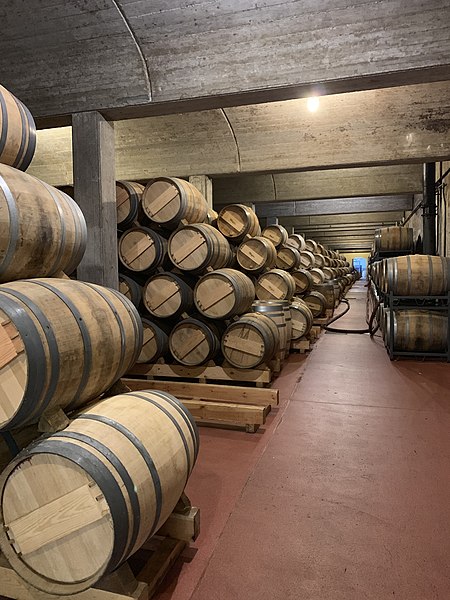Storage of wine is an important consideration for wine that is being kept for long-term aging. While most wine is consumed within 24 hours of purchase, fine wines are often set aside for long-term storage. Wine is one of the few commodities that can improve in flavour and value with age, but it can also rapidly deteriorate if kept in inadequate conditions.
Wines stored in a rack
Madeira is exposed to high temperatures during its winemaking process and is thereby able to sustain exposure to higher temperatures more easily than other wines.
Champagne is often recommended to be stored upright rather than lying on its side.
A wine cellar is a storage room for wine in bottles or barrels, or more rarely in carboys, amphorae, or plastic containers. In an active wine cellar, important factors such as temperature and humidity are maintained by a climate control system. In contrast, passive wine cellars are not climate-controlled, and are usually built underground to reduce temperature swings. An aboveground wine cellar is often called a wine room, while a small wine cellar is sometimes termed a wine closet. The household department responsible for the storage, care and service of wine in a great mediaeval house was termed the buttery. Large wine cellars date back over 3,700 years.
Wine cellar in Chvalovice, Czechia
A table for drinking and gathering in a Sonoma wine cellar
Wine bottles stored in a wine cellar at Jesus College, Oxford
Muga Wine cellar, Haro,Spain







